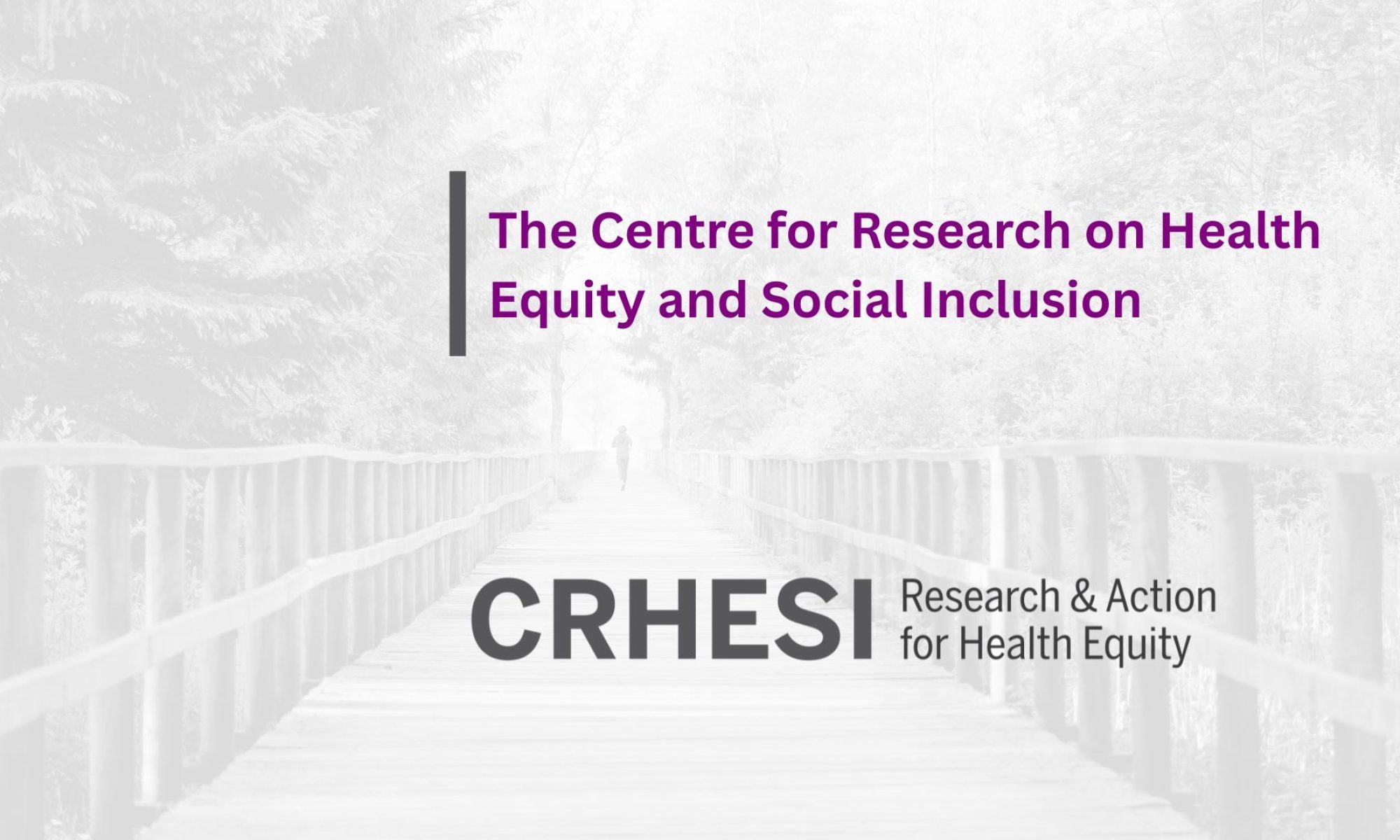Solutions to Homelessness in London
CRHESI members, Dr. Abe Oudshoorn and Jule Ryan spoke to Innovation Works co-tenants during a Brown Bag lunch talk this month on Solutions to Homelessness in London.

Abe’s past clinical work as a community nurse provided the base for his research agenda and desire to work at a higher level, aiming to transform systems to end homelessness in London, Canada and beyond.
Historical context on homelessness:
- Pre WWII, housing instability meant the use of informal dwellings, people built their own shelters, such as shacks (around Carling Heights for example).
- Post WWII, around 1965, public, social housing was introduced.
- Government built and funded the number of units needed to meet the need at that time. These structures built in 1970’s are the same structures still in use in London today.
- Rent was geared to income (30%).
- 1980’s: Housing construction stopped in Canada–Global financial crisis + conservative governments = stop spending
- Abe noted that in the 2006-2015 era, PM Harper flipped this austerity practice and instead encouraged gov spending to stimulate the economy
- Late 1980’s, the first concerns were noted in the House of Parliament about homeless constituents
- 1990’s: Canada builds shelters (such as Salvation Army, Mission Services, domestic violence shelters)
- Abe says: It’s good that we care! But, systemically not good, as shelter living has many deleterious effects and if it is the default solution, people are unwell, unhealthy
- 2004: Centre of Hope is built, which increased beds but they are filled and the need keeps increasing.
- 2008-2016: We introduce the Housing First model: ‘rehouse’ people with supports
- 2016: With a 4.5 % vacancy rate and more new building, 200 people are rehoused and Centre of Hope transitions some space to rental rooms for substance use recovery.
- 2018: We hit a brick wall. The vacancy rate in London dives and capacity for supporting homeless people is maxed out. Add in a depressed housing market in London
- 2021: London is one of the fastest growing communities in Canada which means high competition in the housing market.
There are many, too many stories and examples of people losing their housing due to bad faith evictions.
Abe’s solutions:
The City of London toolbox approach to homelessness is appropriate.
We need many housing supports and services, such as
- The London Community Foundation, which is unique among community foundations as is it declares: ‘we think housing and supports for homeless people is critical.’
- Unity Project
- We need places for people to access, low barrier, accepting day and night, such as the London Public Library
- Prevention efforts are crucial such as the Salvation Army Rent Bank which supports hundreds of people
- Diversion from criminalizing homelessness per the Homeless Hub
Noted: The province of Ontario quietly stopped 250 million spending when the federal government’s Affordable Housing strategy was implemented
Social assistance has not increased despite inflation rising at 6.7%. Calls to reverse inflation or ensure a guaranteed annual income—caution here though as could be easy to underestimate that income
Stop bad faith evictions: For example “we are going to spray units for bugs—then evict the entire building for “not complying”, renovictions.
Need rent control for units
Need to tax escalating land holding
Need to stop single family growth—rather should intensify development
Build more public housing—there is still no plan for this.
Indwell – Hope and Homes for All

Indwell’s Julie Ryan, Community Engagement Coordinator spoke about the 45-year-old community service, aimed at people seeking health, wellness and belonging.
- Affordable and deeply affordable living from homelessness
- 800 people have been housed in 6 Ontario communities
- Some new are builds, some converted old buildings with high environmental standards
- Blended, standard and enhanced supports and services are available in different locations
In London, Woodfield Gate, 356 Dundas St, opened 3 years ago with 10-12 staff on site from 9am-9pm
- Supports include nursing, food security, addiction support, life skills and recreation
- Tenants have built raised beds, race to raise money for Indwell
- Food security, a meal a day and usually eat together
- Tenants garden together, have built raised vegetable beds, and participated in a fun race to raise money for Indwell
“A knowable community where people feel they are contributing, where they feel valued and where they feel loved. They are part of something, and they have agency.”
Embassy Commons, 744 Dundas St is opening in late summer, early fall.
- 72 units with commercial space for Squeaky Wheel bike shop, Edgar and Joes, a pharmacy and Indwell’s regional office + art on the building
Watch for development of Vision SoHo Alliance at the old Victoria hospital site on South St.
- 550-600 with onsite supports aiming for opening in 2024
“Helping people from the ground up, …for the long-term. If I didn’t live here I would probably be dead on the street…everybody deserves a chance to feel safe in a home… A chance to have support.”
Chelsey, Indwell tenant

